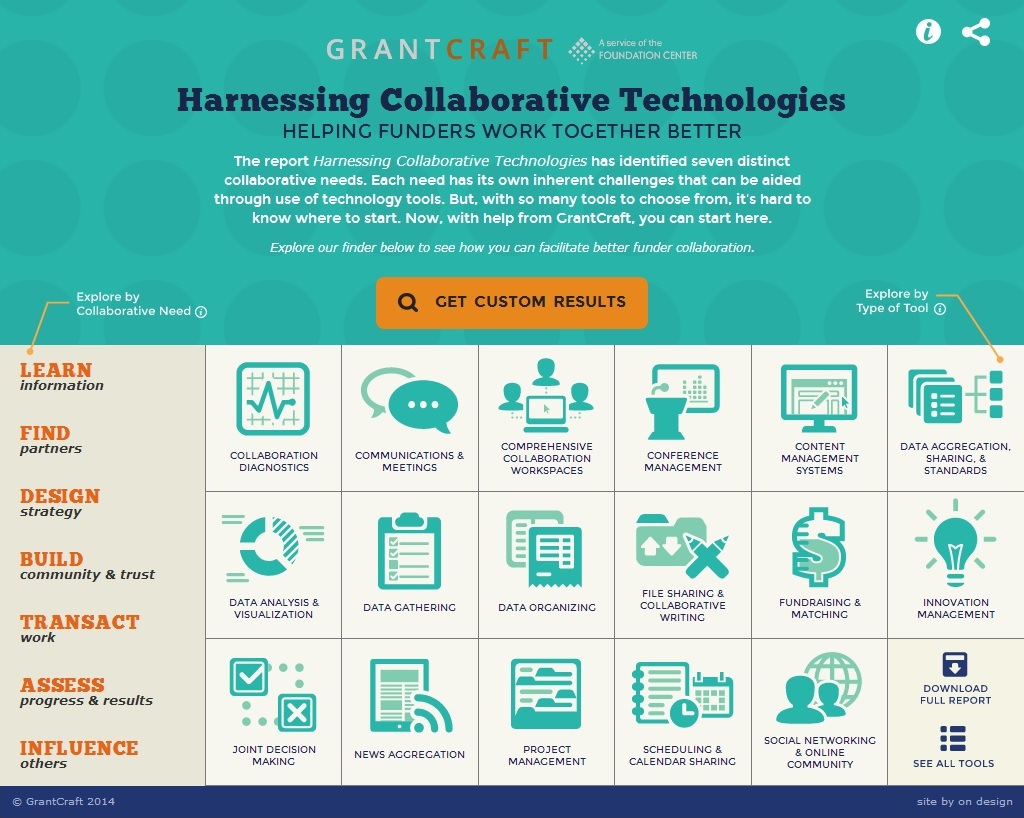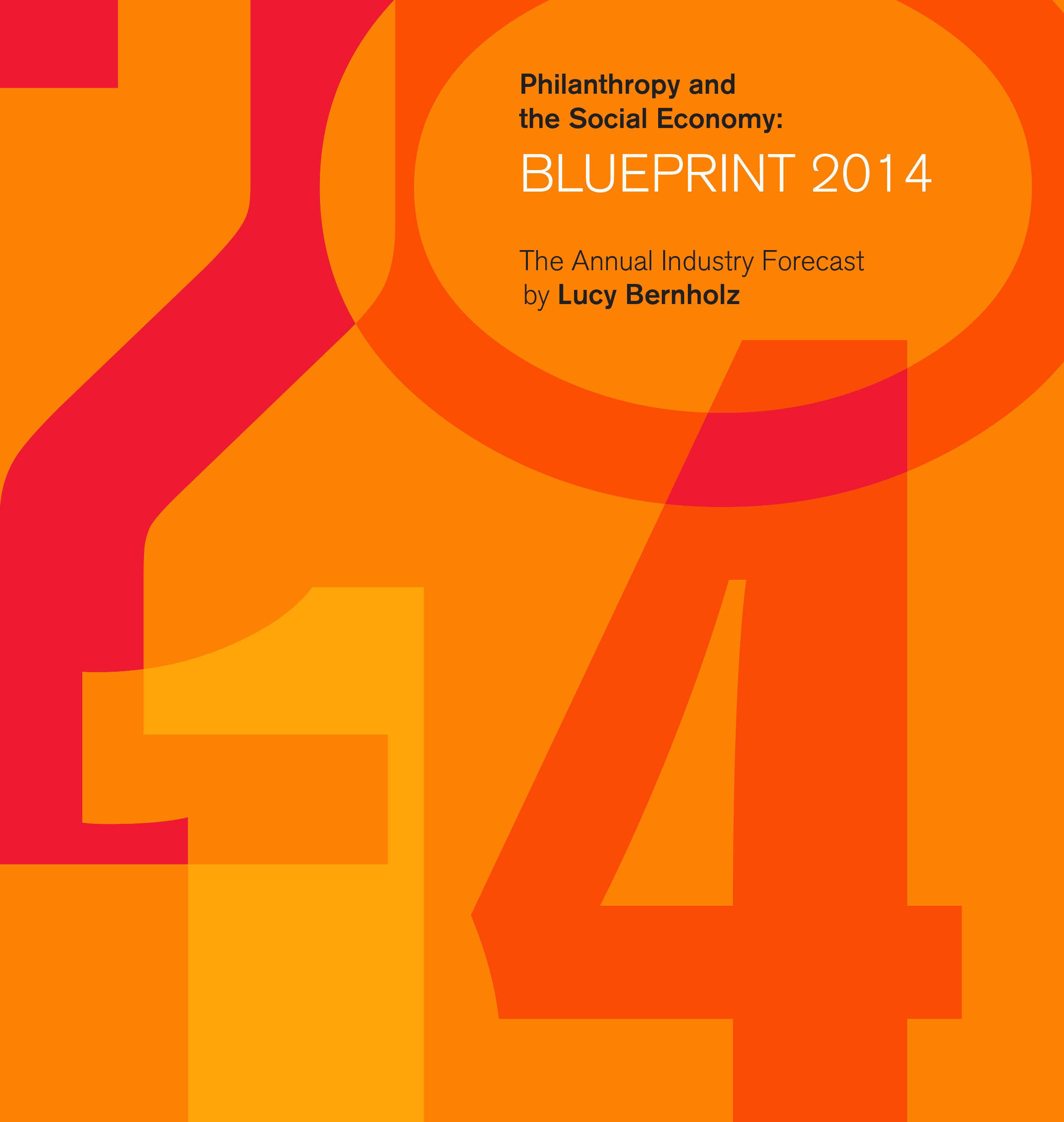Key Ingredients for an Effective and Healthy Funder Collaborative
There are numerous approaches to funder collaboratives in the philanthropic community. From the experience of the Connect U.S. Fund, several ingredients are vital for success.
- Dedicating staff time to funder collaboratives
Operating a funder collaborative is a time-heavy endeavor – for both the funder contributors and the administering staff. In contrast to co-funding of a specific, discrete project, funder collaboratives are ongoing processes that involve complex management of relationships alongside formidable amounts of administration. The members of the funder collaborative often function as a quasi-board of directors and, as those experienced in the nonprofit field know, stewardship of a board has heavy time demands. Add on to this the grantmaking operations of the collaborative, the convening functions and vital intelligence sharing, and one has a need for significant staffing. Without dedicated staff time, a funder collaborative can become a well-intentioned vehicle whose effectiveness is more limited than its vision. If dedicated staff time is not part of the formula, creating a funder collaborative may not be the best philanthropic vehicle to choose. Funders often shy away from funding staff time, but it is critical to any type of effective collaboration.
- Leveling the playing field for funder collaboratives
While equal levels of funding are ideal, vast differentials in foundation assets will likely mean that this is not always achievable or desirable if it means leaving larger amounts of potential funding on the table. In these cases, define a minimal level of funding for participation in the collaboration alongside an equitable decision-making structure and staff time. This alignment avoids unnecessary tensions by alleviating the potential perceived inequalities produced by unequal contributions and commitments. It also avoid domination by the largest funder.
- Institutionalize the Collaborative at Senior Levels
Participation in a funder collaborative is often an exception to a foundation’s regular grantmaking operations. As a “special” project, it has the ability to produce valuable intelligence from the field to support other ongoing grantmaking portfolios. The efficacy of a funder collaborative for a foundation is at times most visible from 30,000 feet – particularly by the senior most staff (e.g., presidents), who often see and think about the broadest context of a foundation’s activities. Thus, it is critical for foundations to institutionalize their funder collaborative, both in involving high-level personnel and identifying a broad-based mechanism from which the funding is derived (e.g., a president’s special fund). Without these institutionalized mechanisms, the funder collaborative will no longer be positioned at a high altitude and, thus, could suffer from issue-specific interests and competition for funds, both of which can ultimately result in diminishing funder investment (both financial and time) in the vehicle.
- Shared Fundraising Responsibilities
It is essential that the contributing funders seek to consistently bring on new funders to the funder collaborative. Responsible staff should act as constant cheerleader for the funder collaborative and its benefits, as well as for its grantees and the issues it covers – both internally (within their own foundations) and externally (in the funding community, with new funders, and other stakeholders). Senior staff, including presidents, must be part of the effort. Often only the presidents will have the vision – and the ability – to sustain collaborative efforts.
- Independent Funding is Key
Critical to success is that the funder collaborative is seen as a separate source of funds, as added resources to the field. Perceived or real competition for resources amongst the grantee-partners of a funder collaborative can be its death knell. Seeking funds from the same small pool of potential funders destroys the neutral, value added of the entity driving the collaborative. Therefore, a separate, additional pool of funding is critical.
- Shared Goals, Success Metrics and Review Process
To be most effective, the funder collaborative should have a clear and unifying goal, success metrics to assess progress towards the goal, and a review process to renegotiate terms of engagement.
Agreement on a shared goal allows funders to pool funds and to make an impact greater than their individual networks of grantees could produce. This goal should be grounded in success metrics that compel the funder collaborative – as a whole – to assess progress towards success. One of the barriers to more funder collaboratives being established is the challenge of multiple stakeholders sharing definitions of success. Oftentimes, there is agreement on the activities that need to be funded but no accompanying mechanism to indicate to the funder collaborative that it has achieved its goal and to what degree. Intentional discussions and documentation of defined success metrics are vital for a shared sense of impact among the members of a funder collaborative.
The funder collaborative also needs to have agreement around when that goal can (or should) change and the anticipated tenure (and potential end date) of the collaborative itself. This should include a regular review of the goals of the collaborative and the strength of each foundation’s commitment to it. In addition, an outside evaluation should be conducted every 2-3 years or after a significant change in landscape. It is vital that the group calls into question its goals when the external landscape shifts, such as in times of social, economic, or political flux.
- Developing an Exit Strategy
Funder collaboratives carry significant power as resources are amassed and leveraged in the field. However, the very nature of foundations – their evolving and changing missions, portfolios, leadership and modes of operation – make the best of funder collaboratives the product of a perfect confluence of the right people at the right time. When launching a funder collaborative, like many investment funds, it is vital to define exit conditions and timelines. While “membership” can always be renewed, the likelihood is slim that the conditions and set of needs that elicited the inception of the collaborative will continue to be aligned over time. That is natural and is the very nature of the vehicle. Without intentional exits, synchronization disappears and drift can occur within the structure of a funder collaborative, diluting its focus, obfuscating its mission, and gobbling resources of time and money without a clear purpose.
Takeaways are critical, bite-sized resources either excerpted from our guides or written by Candid Learning for Funders using the guide's research data or themes post-publication. Attribution is given if the takeaway is a quotation.
This takeaway was derived from Funder Collaboratives.


